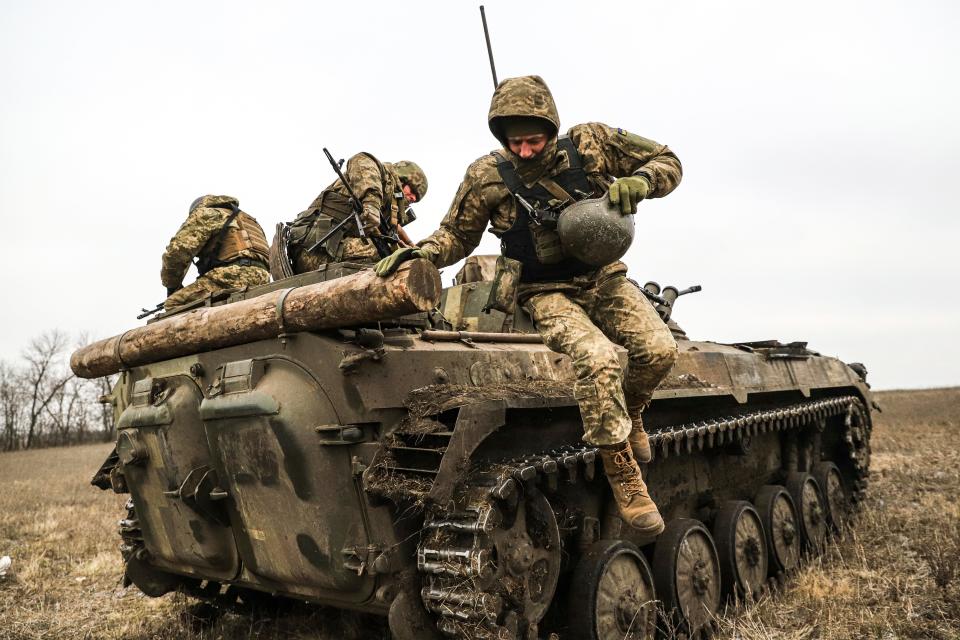As Biden seeks to avoid wider war, delivery of M1 Abrams tanks to Ukraine escalates conflict
WASHINGTON – The White House relented Wednesday after months of pleas from Ukraine for the Pentagon's most lethal armored vehicle: the Abrams tank.
President Joe Biden announced the transfer of 31 Abrams to thwart an anticipated Russian spring offensive and galvanize European allies.
Fighting this winter has been described by a senior U.S. military official as "savage," likening it to World War I trench warfare. Analysts expect Russia to mount what could be a fierce offensive in a campaign to end Ukraine’s string of battlefield successes in recent months and reverse the heavy troop and territorial losses Russia suffered in the first year of fighting.

Since the war began, the White House and Pentagon have sought to supply Ukraine with the weapons it needs to resist President Vladimir Putin's aggression without sparking a wider war in Europe. Yet Biden's announcement Wednesday also signals that the war, launched with a militarily unprovoked invasion and soon to enter its second year, shows no sign of ending.
After more than 100,000 casualties on each side, it's about to get even bloodier.
"From a military standpoint, this is a very, very difficult fight," Army Gen. Mark Milley, the chairman of the Joint Chiefs of Staff said recently. "This fight stretches all the way from right now ... from Kharkiv down to Kherson, and there's significant fighting ongoing."
How did we get here?
In the fall, Ukrainian forces, using sophisticated, accurate rocket artillery supplied by the Pentagon, chased Russian forces from large portions of land seized in the early the war. Ukrainian president Volodymyr Zelenskyy addressed Congress in December, thanking the United States for its contributions but stressing more was needed. Abrams tanks have been near the top of the Ukrainian wish list.
Some in the Biden administration had resisted sending the tanks, fearing it would provoke Putin, said Seth Jones, senior vice president and director of the international security program at the Center for Strategic and International Studies. Those concerns were misplaced, he said, and have been overtaken by the concern that Russia is poised to make significant gains this spring.
"It would look really bad if Russia makes advances on the ground, and we could have helped by supplying tanks," Jones said.
What do Abrams and Leopards provide?
Biden said that sending the 31 Abrams tanks is the equivalent of one Ukrainian battalion.
M1 Abrams tanks, and the near-simultaneous commitment of western allies to provide their own advanced armor, including, importantly Germany's Leopard 2, almost assures that. Germany and other European allies will outfit two Ukrainian battalions with tanks. A U.S. tank battalion has about 60 tanks.
The Abrams, with a 120mm cannon, robust armor protection and mobility will outgun and outrun Russian and many of its Soviet-era tanks. Germany's Leopard is also a modern, highly capable tank.
"They are better than Soviet tanks, plus the Ukrainians will be trained better," said Michael O'Hanlon, a senior fellow and director of research in foreign policy at the Brookings Institution.
Putin 'wont stop' with Ukraine: Why Americans should care about Russia's aggression against its neighbor
What's happening in Russia's war in Ukraine?
Conditions on the battlefield have changed in recent weeks, John Kirby, the National Security Council’s coordinator for strategic communication, told reporters Wednesday. For months, the Ukrainian and Russian forces have waged a deadly artillery duel along a mostly static front that stretches about 700 miles in eastern Ukraine. During that time, Putin has sent tens of thousands of conscripts as reinforcements and for what is expected to be a new offensive this spring.
“These tanks are meant to help Ukraine fight effectively on open terrain, to defend their sovereignty and their territory and to win back territory that the Russians have taken from them,” Kirby said.

 Yahoo Autos
Yahoo Autos